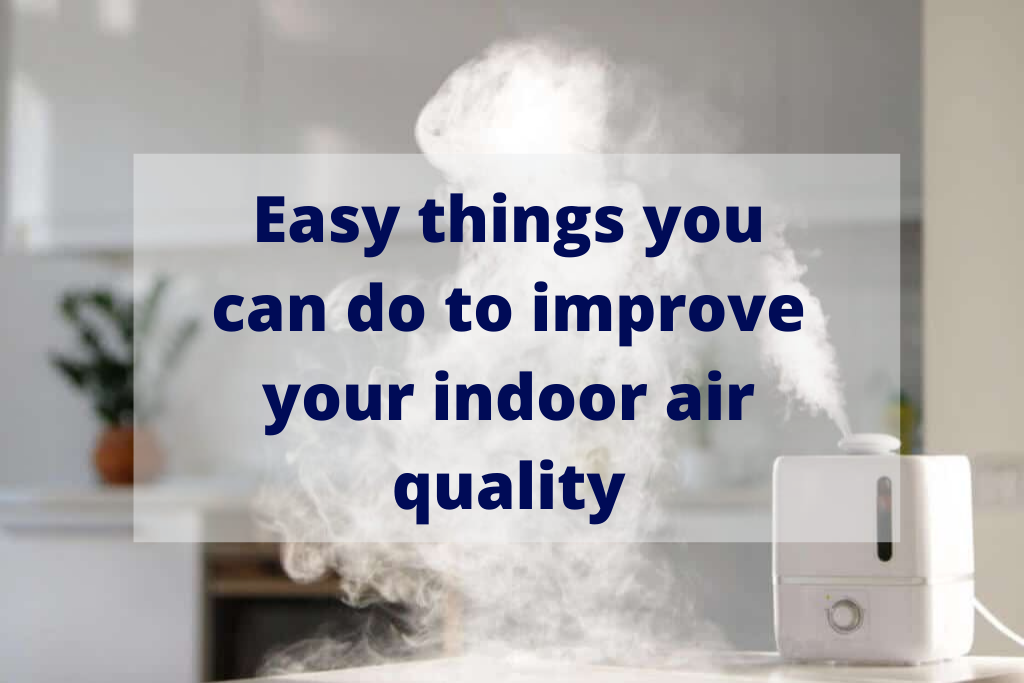Leonard Splaine Easy things you can do to improve your indoor air quality

Low air quality in your home can have a big effect on your health, and mood. We tend to think of air pollution as something outside — smog, ozone, or haze hanging in the air, especially in summer. But the truth is, the air inside homes, offices, and other buildings can be more polluted than the air outside. The air inside your home may be polluted by lead (in house dust), formaldehyde, fire-retardants, radon, even volatile chemicals from fragrances used in conventional cleaners. Some pollutants are tracked into the home. Some arrive via a new mattress or furniture, carpet cleaners, or a coat of paint on the walls.
Indoor air quality tends to be worse in the winter months because there is often no flow of fresh air from the outside, meaning allergens stay trapped inside. Stale indoor air and heating systems can increase the amount of allergy-inducing dust mites, pet dander, and mold spores circulating through your house. In late winter and early spring, it may still be too chilly to throw open the windows to pull out the musty air, so while you await the warmer weather it’s important to be aware of some of the allergy and respiratory triggers that may be lurking in your surroundings.
In this article you would learn little preventative maintenance tips and some basic knowledge, you can take immediate steps to improve your indoor air quality today.
Improving air quality
On average, we spend around 90% of our time indoors. So, it’s important to keep our indoor air as clean as possible, especially during winter months when we like to keep our windows and doors shut tight to seal out the cold.
Making an effort to improve indoor air quality can help you avoid asthma flare-ups and allergy symptoms and keep you breathing easily through the colder months.
While it’s probably not possible to eliminate all the allergens inside your home, you can reduce the number — and your exposure to them — by making some simple changes. Here are some strategies you can use to improve air quality inside your home and hopefully improve your allergy symptoms.
Keep it clean. A clean house may be a healthier house because good indoor hygiene can greatly cut down on dust and animal dander. Your cleaning efforts should focus on strategies to reduce the accumulation of pet dander, mold, and dust lurking in your home. Focus on the following:
- Vacuuming the carpets and area rugs at least once or twice a week with a vacuum cleaner equipped with a HEPA filter. Opting for hard-surface flooring instead of wall-to-wall carpeting may also cut down on allergens in the home.
- Regularly clean bedding, drapes, and other items that tend to attract allergens—particularly if you have pets. The American Academy of Allergy, Asthma & Immunology recommends washing in water that is at least 130° F. Also consider using dust mite–proof covers on pillows, as well as mattresses and box springs, whenever possible.
- Clearing clutter, because it traps and holds dust that can trigger a reaction.
Keep the greenery outdoors. In-door plants are pretty, but they can also collect and foster the growth of mold. So, if indoor allergens are a problem, you’ll want to avoid them.
While some plants are touted as helping to improve indoor air quality because they release oxygen, they are still allergy triggers for many people.
Change your filters. If you have a forced-air heating system, be certain to change the filters regularly, says Dr. BuSaba. Electrostatic filters can help ensure that dust and other airborne irritants get trapped instead of being recirculated throughout your home.
Also, consider having your ducts cleaned to remove trapped dust. This may not always be advisable, but it helps in some cases. The Environmental Protection Agency offers advice on making this decision at https://www.health.harvard.edu/iaq.
Invest in an air purifier. If you’re allergic to indoor allergens and can’t control the source of the problem — for example, you’re unwilling to give up your family pet — it may help to use an air purifier, says Dr. BuSaba. Placed in the most commonly used areas of the house, these devices, in particular ionic purifiers, can help capture some of the irritants that may trigger your symptoms. You’re probably not going to be able to remove these allergens completely, but you can cut down on them, which may help the problem.
Also consider a dehumidifier in damp areas, such as a basement, to help prevent the growth of mold. Ensure that bathrooms, another potential source of mold, are well ventilated as well and scrub off any visible mold that collects in the shower, on fixtures, or walls.
Let the fresh air in. Even in the cold months, open windows from time to time to allow fresh air to move into the house. Also, move potential air contaminants out by using fans in the kitchen to remove cooking fumes.
Conclusion
Keeping the air in your home pure and breathable requires diligence and preventative maintenance. Now that you’ve learned a few simple steps you can do yourself to reduce indoor air pollution, consider setting up an appointment with a Leonard Splaine professional. We have a range of service plans that include AC filter replacement and more to help keep your air clean. Contact Leonard Splaine today and breathe easy knowing the air in your home is clean and safe.
